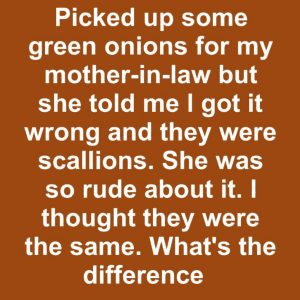For centuries, palmistry—also known as chiromancy—has fascinated people around the world, offering insight into an individual’s personality, potential, and even financial future by reading the lines and markings on their hands. But is there any truth to the idea that our palms can reveal whether we’re destined for wealth or financial struggle? Let’s explore this intriguing concept, looking at how different lines are interpreted in traditional palmistry and examining what modern perspectives have to say about this age-old practice.
What Is Palmistry? A Brief Overview of Chiromancy

Palmistry is the ancient art of interpreting the lines, shapes, and markings on a person’s hand to predict their character traits, life path, and future. Practiced in various forms across cultures—including in India, China, and Greece—palmistry has evolved into a complex system with specific meanings attributed to each line and feature on the hand.
Palm readers focus on key lines, like the heart line, head line, and life line, as well as smaller markings and shapes. The belief is that these features can reveal everything from personality strengths and weaknesses to one’s emotional tendencies and, yes, even one’s financial fortune.
Wealth Indicators in Palmistry: Do Certain Lines Indicate Riches or Poverty?
One of the most intriguing claims in palmistry is the idea that certain palm lines and markings indicate wealth or poverty. Many believe that specific line formations near the thumb, crosses on the palm, and other markings are connected to financial success or struggle.
- The Money Line: Some practitioners look for a “money line,” often found beneath the pinky finger (Mercury mount), which is believed to reflect financial gains or losses. A deep, clear money line is considered a sign of prosperity, while a faint or broken line might be seen as an indicator of financial difficulties.
- The Fate Line: This line runs vertically down the center of the palm. A strong, unbroken fate line is said to suggest stability and success in career or finances, while a fragmented or short fate line may be interpreted as an indicator of inconsistent financial luck.
- The Sun Line: Located near the ring finger, the sun line is linked to fame and success. A well-defined sun line is thought to attract wealth and recognition, while an absent or weak sun line may suggest financial challenges or a lack of public success.
- Crossed Lines Near the Thumb: Some palmists interpret crossed lines near the thumb as indicators of financial struggle. In contrast, fewer intersecting lines in this area are believed to signify a smooth financial path. According to this interpretation, a clean, clear thumb area can be linked to stability, while many crisscrossed lines may imply financial burdens.
Cultural Beliefs Surrounding Palmistry and Wealth
Palmistry’s interpretations of wealth and poverty vary by culture. For instance, in Chinese palmistry, the position and depth of the “wealth line” or “fate line” play a significant role in determining a person’s financial future. Similarly, in Indian and Greek traditions, these lines are thought to represent one’s career trajectory, luck, and overall prosperity.
In these cultures, the idea that certain hand markings can forecast financial outcomes has become part of folk wisdom. Some view it as a form of guidance, helping people prepare for potential financial challenges or capitalize on forthcoming opportunities. In this light, palmistry isn’t merely about fortune-telling but serves as a tool for personal insight.
Skepticism and Modern Views on Palmistry’s Predictions
While palmistry has deep roots and cultural significance, it faces significant skepticism in the modern scientific world. Many consider it pseudoscience, as there is no empirical evidence that hand lines correlate with personality traits or future financial success. Critics argue that the interpretations are too broad and subjective, often relying on confirmation bias, where people see what they want to see in a reading.
Psychologists explain that people might find palm readings meaningful due to the Barnum effect, a phenomenon where individuals believe vague, general statements apply specifically to them. In this way, a palm reading can feel accurate and personalized, even if it lacks scientific basis.

A Modern Take on Palmistry: Entertainment or Insight?
Despite the skepticism, many still find palmistry intriguing. It provides a structured way to reflect on personal goals, potential challenges, and life’s journey. Even if it doesn’t predict the future, it can be a fun and engaging tool for self-reflection.
Moreover, some people see palmistry as a form of mindfulness, a moment to pause and consider their lives from a fresh perspective. Instead of viewing palmistry as a hard-and-fast rule, many choose to approach it with an open mind, finding personal value in the reflections it inspires.
Common Misconceptions About Wealth and Palmistry
Palmistry is filled with myths and misconceptions, especially when it comes to interpreting wealth and poverty lines. Here are some common misunderstandings:
- Assuming Certain Lines Guarantee Wealth: Just because a person has a deep, clear money line doesn’t mean they’ll become wealthy. Palmistry can’t account for external factors like economic circumstances or personal choices that play significant roles in financial success.
- Believing Broken Lines Signal Financial Ruin: A fragmented fate line or sun line doesn’t necessarily spell disaster. Palmists might interpret these lines as indicators of change or challenges, but these hurdles are not definitive predictors of poverty.
- Seeing Palmistry as a Financial Destiny Map: While some enjoy using palmistry for insights, it’s important to remember that hand lines are not destiny. Success often depends on actions, opportunities, and decisions rather than physical markings on the hand.
Palmistry in Popular Culture: A Symbolic Reflection

The image of a closed palm with lines marked “poor” or “rich” has become a symbolic representation of the idea that our fortunes are in our hands—both literally and metaphorically. It reflects a notion that many hold, that some people are “born lucky” while others face greater challenges. But in the real world, wealth and financial security are influenced by hard work, circumstances, education, and sometimes a bit of luck.
In this sense, palmistry can serve as a metaphor for how we view opportunity and fate. While our hands might hold unique lines, they are ultimately tools for creating our path. Whether or not these lines mean wealth or poverty depends largely on our actions and choices, rather than predetermined fates inscribed on our skin.
Conclusion: The True Secret to Wealth Lies in Your Hands—But Not in the Lines
So, can your hands reveal if you’re destined to be rich or poor? While palmistry is fascinating and has a place in cultural storytelling, it’s unlikely to predict financial success. The real “secret” lies in how you use your hands to create opportunities, make decisions, and navigate challenges.
Palmistry, when approached with curiosity rather than conviction, offers a fun glimpse into cultural beliefs and self-reflection. But at the end of the day, wealth and success come from hard work, planning, and a bit of good fortune. So, go ahead—look at your hands. Remember that while they may have interesting lines, they’re most powerful when they’re building, creating, and crafting your unique path to success.


